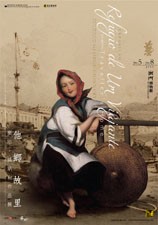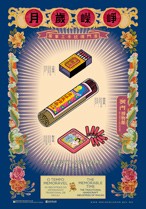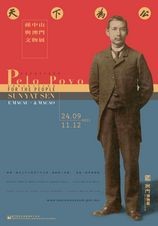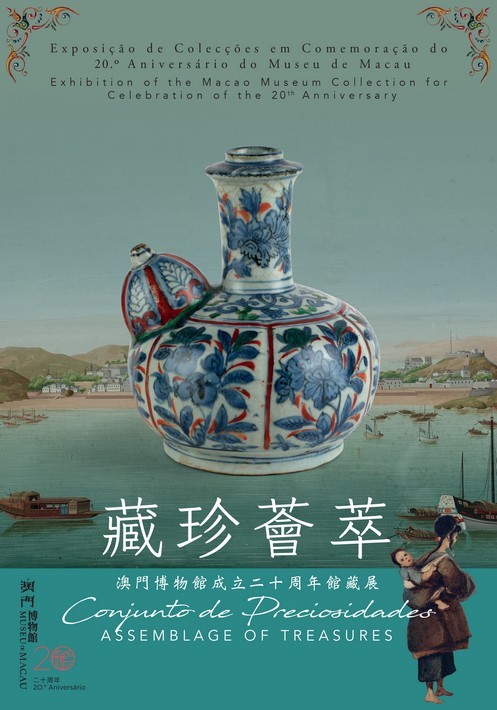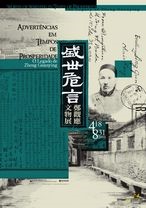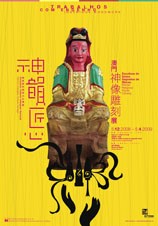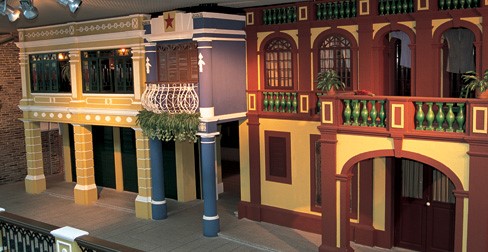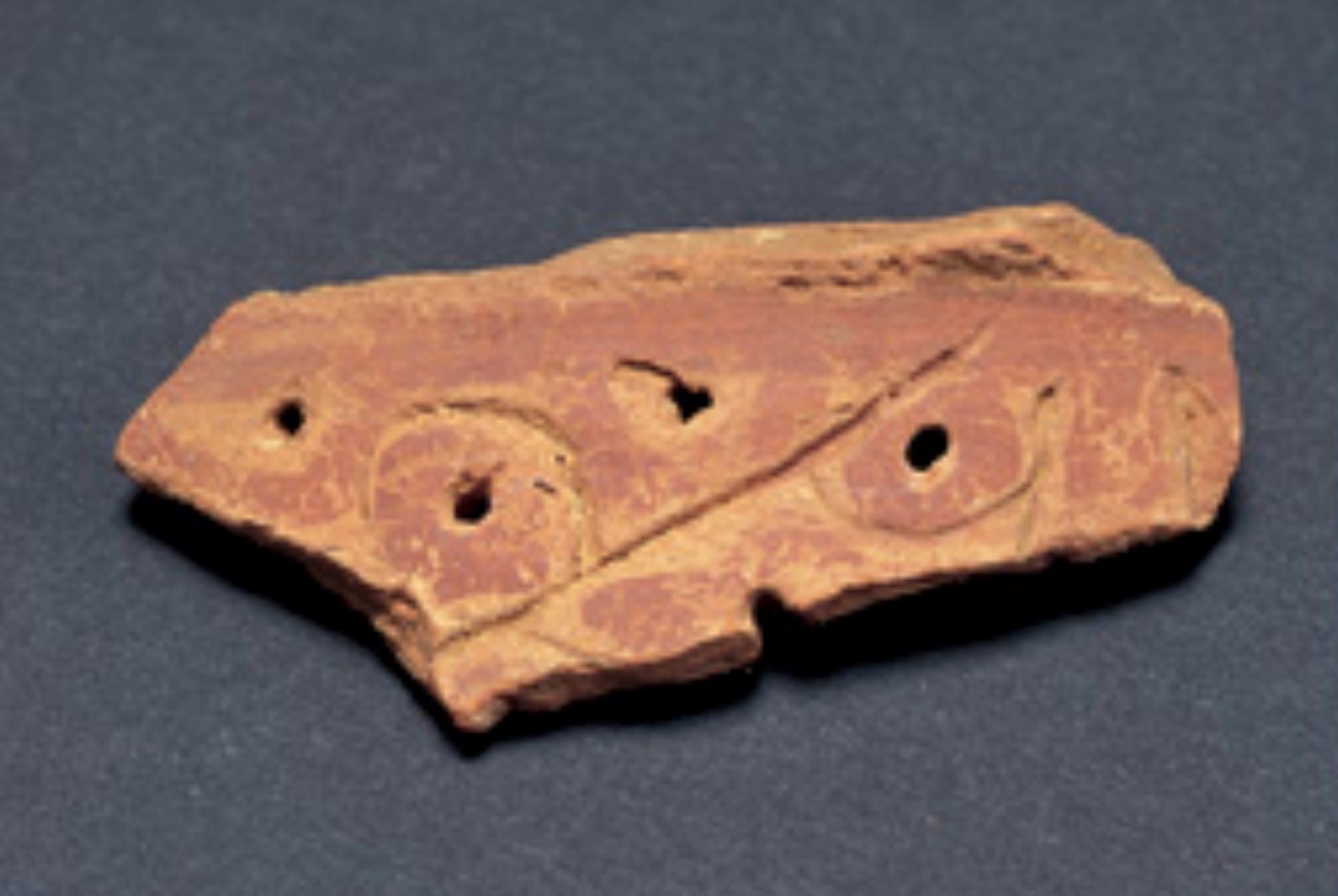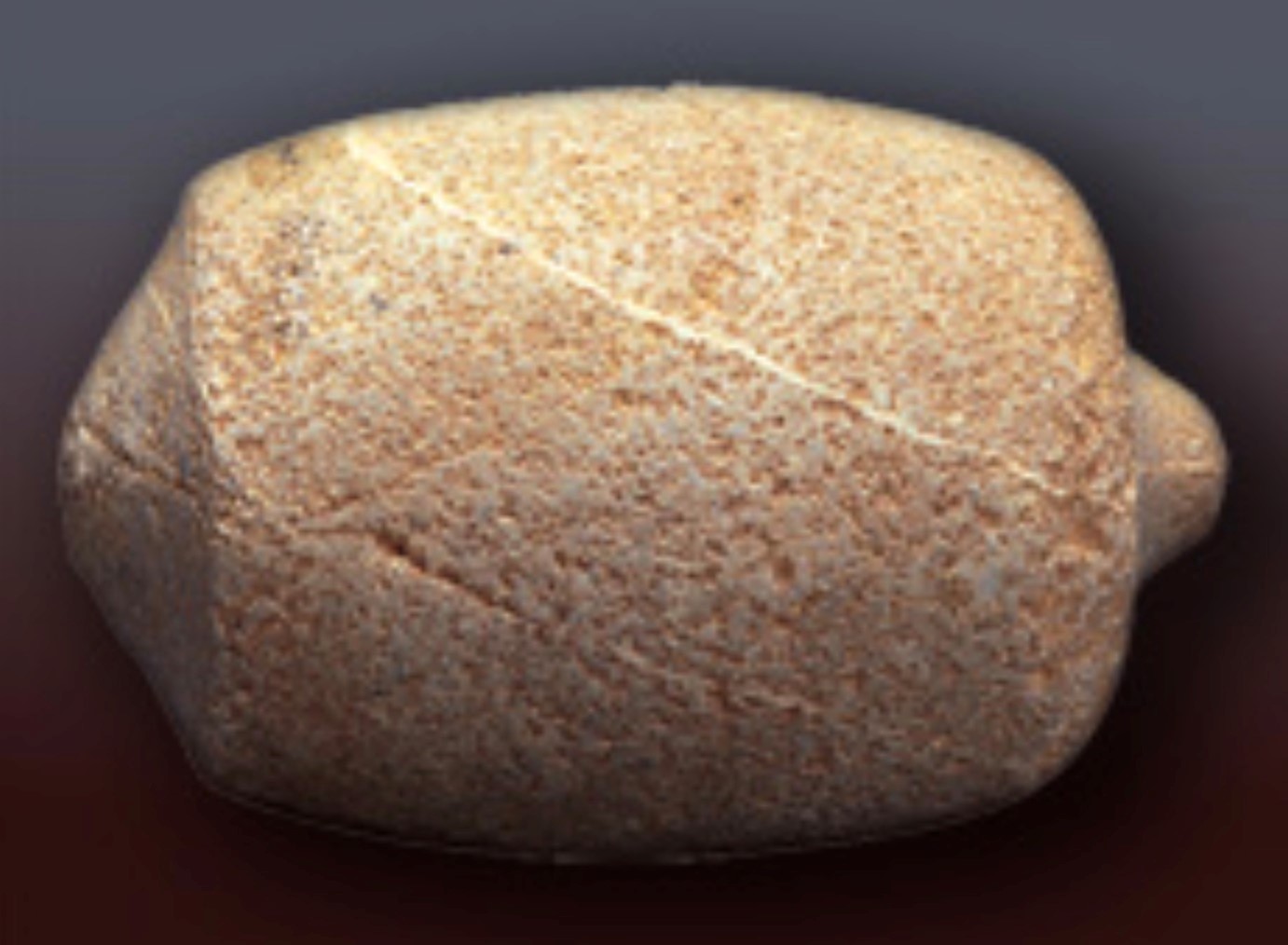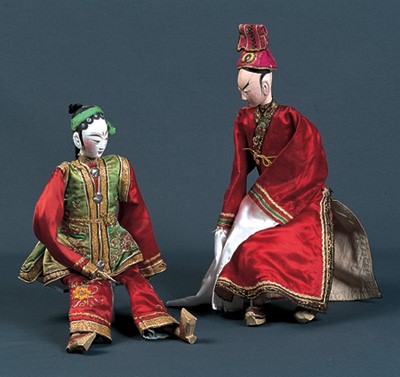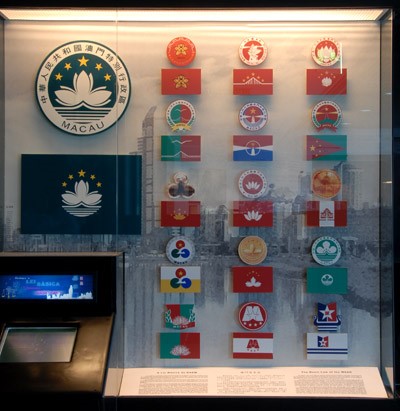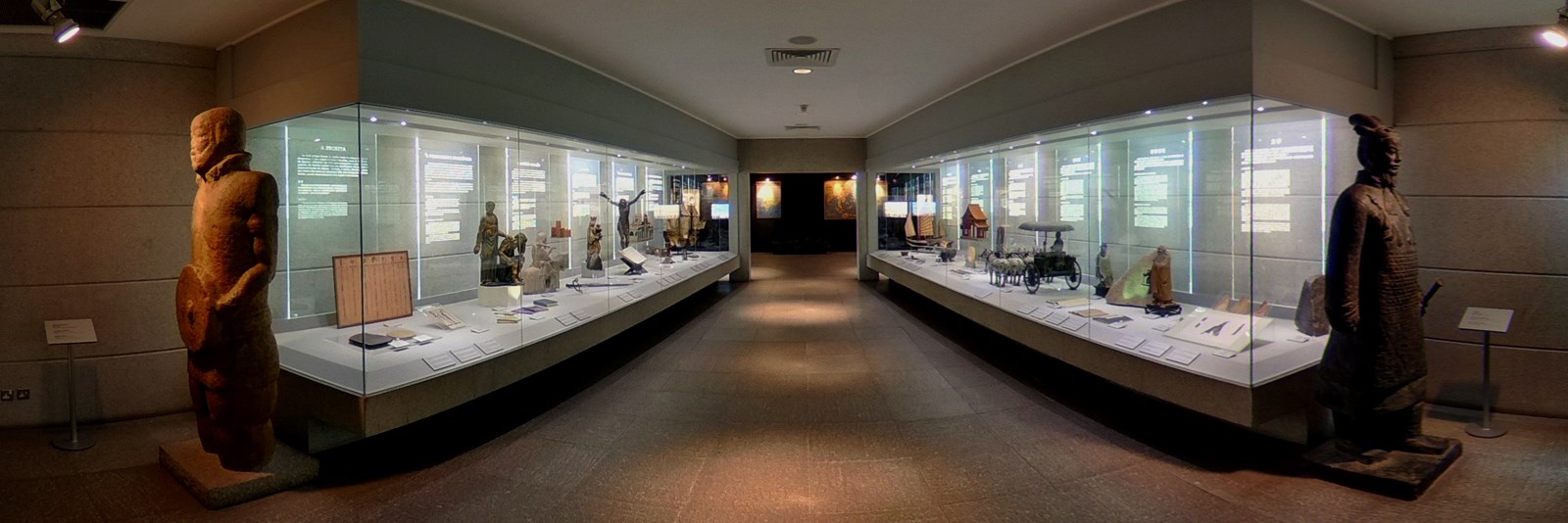
Permanent Exhibitions
| 地點 | Exhibition Gallery, 3rd floor of Macao Museum |
| 時間 | Tuesday to Sunday, 10am to 6pm (last entry at 5:30pm) |
| 收費 | Admission Fee |
The Macao Museum is a space dedicated to the history and culture of Macao, possessed of a vast number of objects of historical and cultural value, which demonstrate the way of life of the various communities that have inhabited the city for centuries.
Various permanent exhibitions are displayed on the Museum’s three levels:

1st floor (History) —
1st floor – A presentation of Macao's early history
and the development of its culture, influenced by the commercial activities between the Chinese and the
Portuguese, and by religious and cultural contact between the two civilizations.
-
Prehistoric Age MacaoMacao has numerous archaeological sites. Hac Sá in Coloane is enriched with a wealth of ancient cultural heritage and has given up the most famous prehistoric relics in Macao.Between 1972 and 2006, archaeologists carried out archaeological excavations in Hac Sá and unearthed skeletons, painted pottery shards, copper coins, buttons, arrows, quartz rings, penannular jade pieces and stone implements such as stone axes and adzes. The remains reveal that the site was inhabited by human beings during the New Stone Age around 4,000 BC, who even established artisan workshops producing crystal bracelets and earrings.
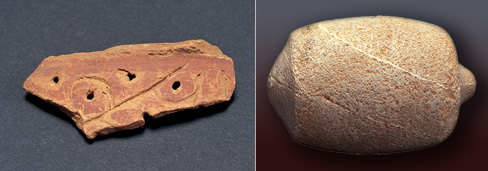
-
During the 1550’s, Portuguese merchants expanded trade to the Chinese Mainland via Macao, transforming the city into the epicentre of Sino-Portuguese trade. Various new international markets - from China to Japan, the Philippines, Malaysia, India, Europe, and even South America and Africa - were exploited, making Macao the most important trading port in the Far East.
The 1580’s witnessed the prosperity of commercial activities in Macao. European commodities such as clocks and wool fabrics were novelties in the Chinese market. On the other hand, silks, tea and porcelain were shipped and exported far away from Macao to Southeast Asia and European countries.
Between the 1620’s and the 1640’s, Portuguese merchants gradually lost their trade privileges in China and Japan. Eventually, its trading relationship with Malaysia was also deprived by the Netherlands, and trade between Macao and Manila also terminated. Following the Opium Wars, Macao no longer served as an important foreign trading centre in China due to the rise of the five treaty ports and Hong Kong.
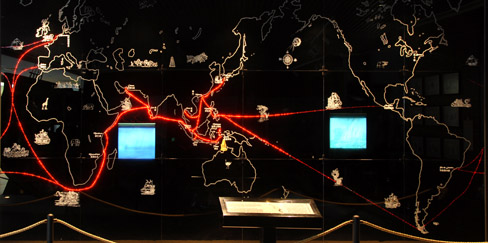
-
Following the Portuguese arrival in Macao in the 16th Century, the sparsely populated peninsula nurtured many business activities and gradually grew into a major trading port serving China and the West. European powers then coveted the city of Macao. In the early 17th Century, the Portuguese started to build fortresses and solid defences along Macao's coastal area and strategic locations with the implicit consent of the Ming and Qing governments via the policy of 'controlling foreigners by foreigners'.
To increase Macao's defensive power, the Portuguese built a cannon foundry near the Fortaleza de Nossa Senhora do Bom Parto in Praia Grande, which supplied military defence equipment such as cannons to the local market in addition to exporting to China, Japan, Southeast Asia and Europe.
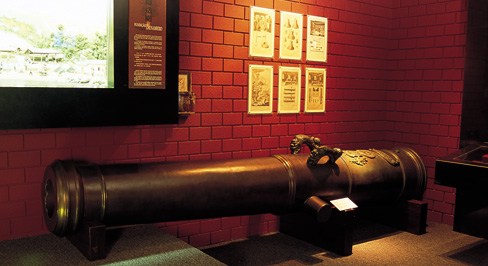
-
In the four hundred years marking the cultural exchange between China and the West, Macao has embraced a harmonious co-existence of diverse religious beliefs. In the long river of history, the local Chinese have embraced Taoism or Buddhism and other religions such as Catholicism, Protestantism, Islamism, Mormonism and Baha'ism - introduced to Macao by the Portuguese and other foreigners - have co-existed in the city of Macao. While seeking mutual respect and harmonious co-existence, these religions disseminated their respective religious doctrines. Moreover, religious architecture such as temples and churches which are home to a variety of religious artefacts can be found everywhere in the Macao peninsula, Taipa and Coloane islands.
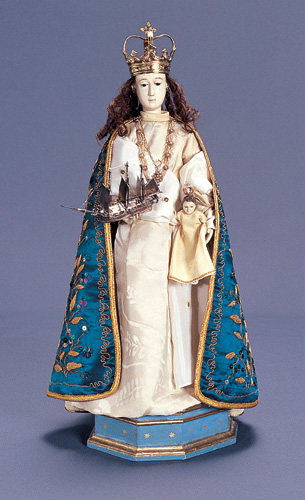

2nd floor (Folks customs) —
2nd floor – Various aspects of the traditions
and folk arts of Macao, as well as its religious ceremonies and traditional festivals.
-
The architecture of Macao features a harmonious blend of conventional Chinese-style and tropical elements, the design of which can trace its origins to European neoclassicism. The integration of different Eastern and Western cultural elements in architecture has shaped the unique architectural style of Macao, projecting the bewitching charm of Macao.
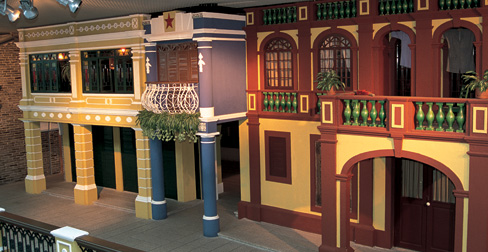
-
Firecrackers, joss sticks and match manufacturing were major traditional industries and exports in Macao in the 20th Century. The firecrackers industry, which made its appearance in the late 19th Century, came to an end in the 1990s following the closure of the Po Sing Firecracker Factory.
The matches industry flourished in the 1920s but saw a decline in the 1970s in Macao. The fifty years history, though transient, marked the production of matches recognised as the best in the Far East. In addition to catering for the needs of the local market, Macao supplied Hong Kong, the Chinese mainland, Southeast Asia, Europe and America.
Several joss stick factories remain in Macao today, operated as small workshops.
Herbal tea, traditional Chinese medicine and cake shops are familiar to the Macao people in daily life. Nowadays, some of these shops still preserve the tradition, while some have modernised; the Chinese culture they embrace, however, has never changed.
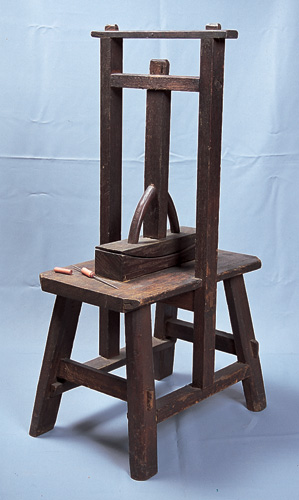
-
Macao is a place where Chinese and Westerners live in harmony. As most of the Chinese are natives of Guangdong and Fujian, Macao is enriched with folk entertainment and regional characteristics. The most common entertainment activities are Cantonese Opera, Chinese puppet plays, and cricket fighting, etc.
Cantonese Opera is a regional opera genre in China performed in the Guangzhou dialect. Popular in Macao, Hong Kong, Guangdong and Guangxi, Cantonese Opera has influenced Macao residents for generations.
Puppet plays have a long history in China and comprise a wide variety of genres. Puppets displayed at the Macao Museum primarily include the rod puppet from Guangdong, wire puppet from Chaozhou, and the string puppet from Fujian.
Cricket fighting is a traditional form of Chinese game mostly conducted at the beginning of Summer and early Autumn. In step with social advancement, this form of recreation among Macao residents has seen great change. Nevertheless, traditional games are still favoured by Macao people.
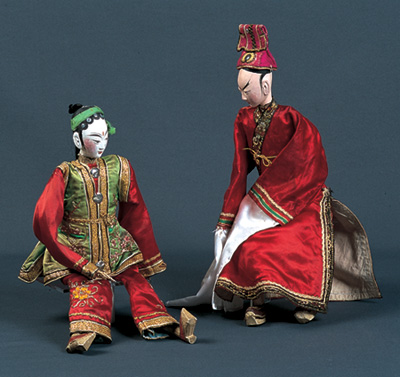
-
Following the arrival of the Portuguese in Macao, the Western culture, in particular the South European culture, influenced and impacted Macao residents who followed traditional Chinese culture in many aspects. The daily life of the Chinese residents of Macao - such as their cooking, costumes, wedding ceremonies, festivals , etc. - preserved traditional Chinese customs, whilst fusing Western cultures and customs, making Macao share dissimilarities and commonalities with other regions in China.
The Macanese - a special community in Macao nurtured by Eastern and Western cultures - have a unique language and cooking artistry that adds charm to Macao's colourful living culture.
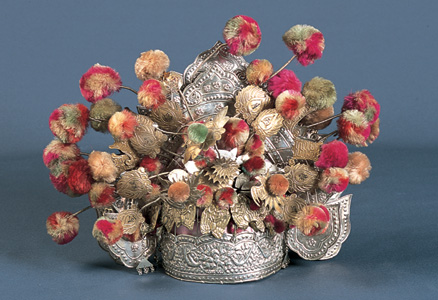

3rd floor (Contemporary Macao with various) —
3rd floor – Contemporary
Macao, featuring current city life and highlighting the portrayal of the region by various literary and
artistic personalities.
-
Macao, a confluence of Eastern and Western cultures, has been the cradle of many artists, composers, poets and politicians. During the Ming and Qing dynasties, numerous scholar-bureaucrats arrived in Macao to study Western cultures and arts plus advanced science and technology, and became familiar with Western religions and philosophies. The ideology of reform inspired them to compose a number of literary and art works related to Macao and political treatises which influenced Chinese politics. In addition, Macao has lent endless inspiration to Western artists in the East and nurtured many local authors and artists, thereby yielding fruitful achievements in area of Chinese and Western culture in the soil of Macao.
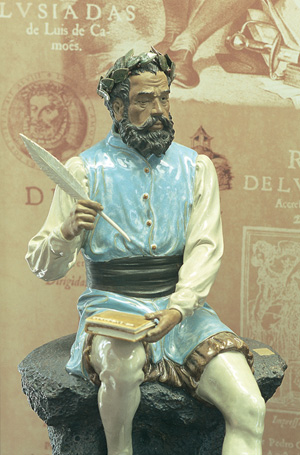
-
According to records, the total area of Macao in its early days approximated just 2.78 square kilometres. This small speck of land was one of the earliest places to receive Europeans. Chinese-style architecture prevailed in Macao in those days, while local temples strictly followed the conventional style. Since the arrival of the Portuguese, Macao has seen the continued emergence of a variety of architectural styles and colours which have integrated with different cultures and arts and gradually shaped the splendid and unique cityscape of Macao.
China resumed sovereignty over Macao with the establishment of the Macao SAR Government on 20th December 1999. The enforcement of the Basic Law of Macao seeks to ensure social stability and lay the foundations for the future development of the Macao SAR. It symbolises the spirit of the Macao people, the masters of Macao who embark upon a new era in history.
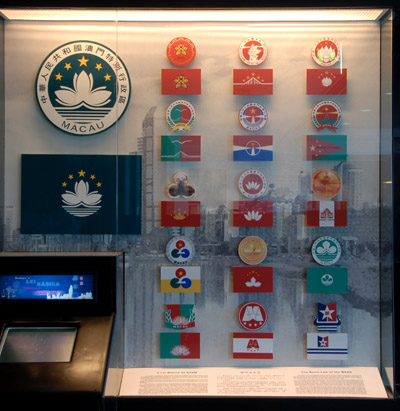
Related Photos
Related Exhibitions
All Exhibitions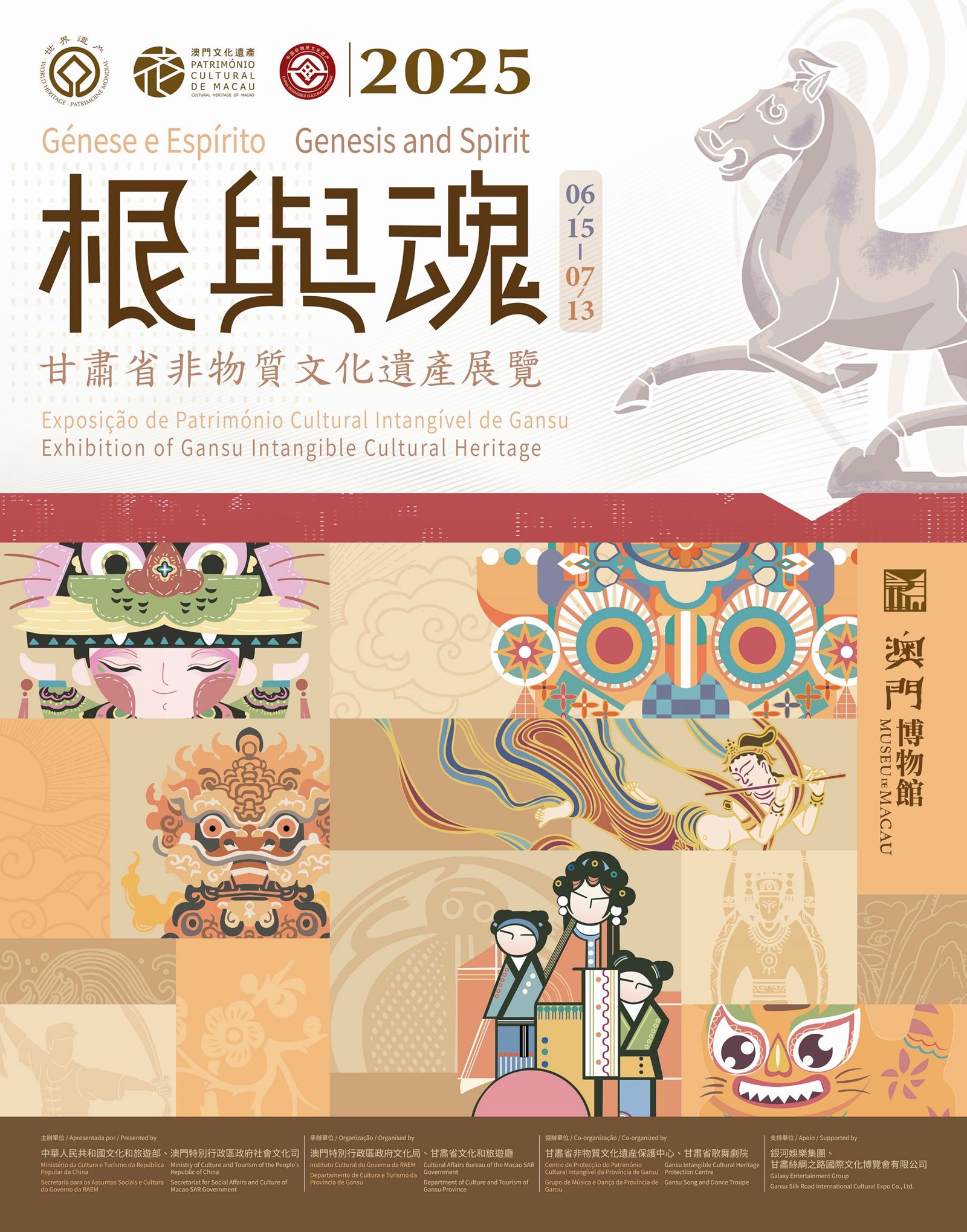
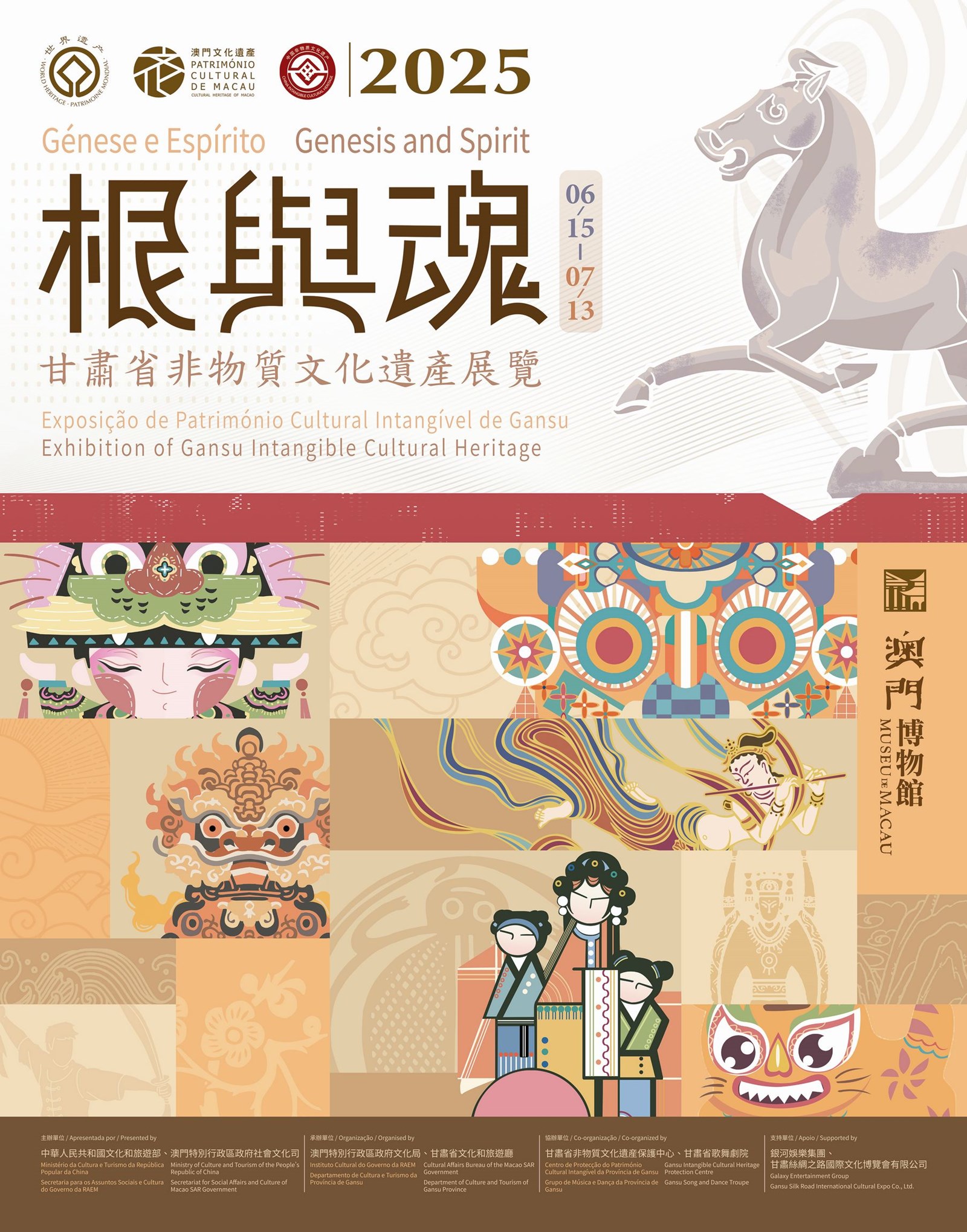
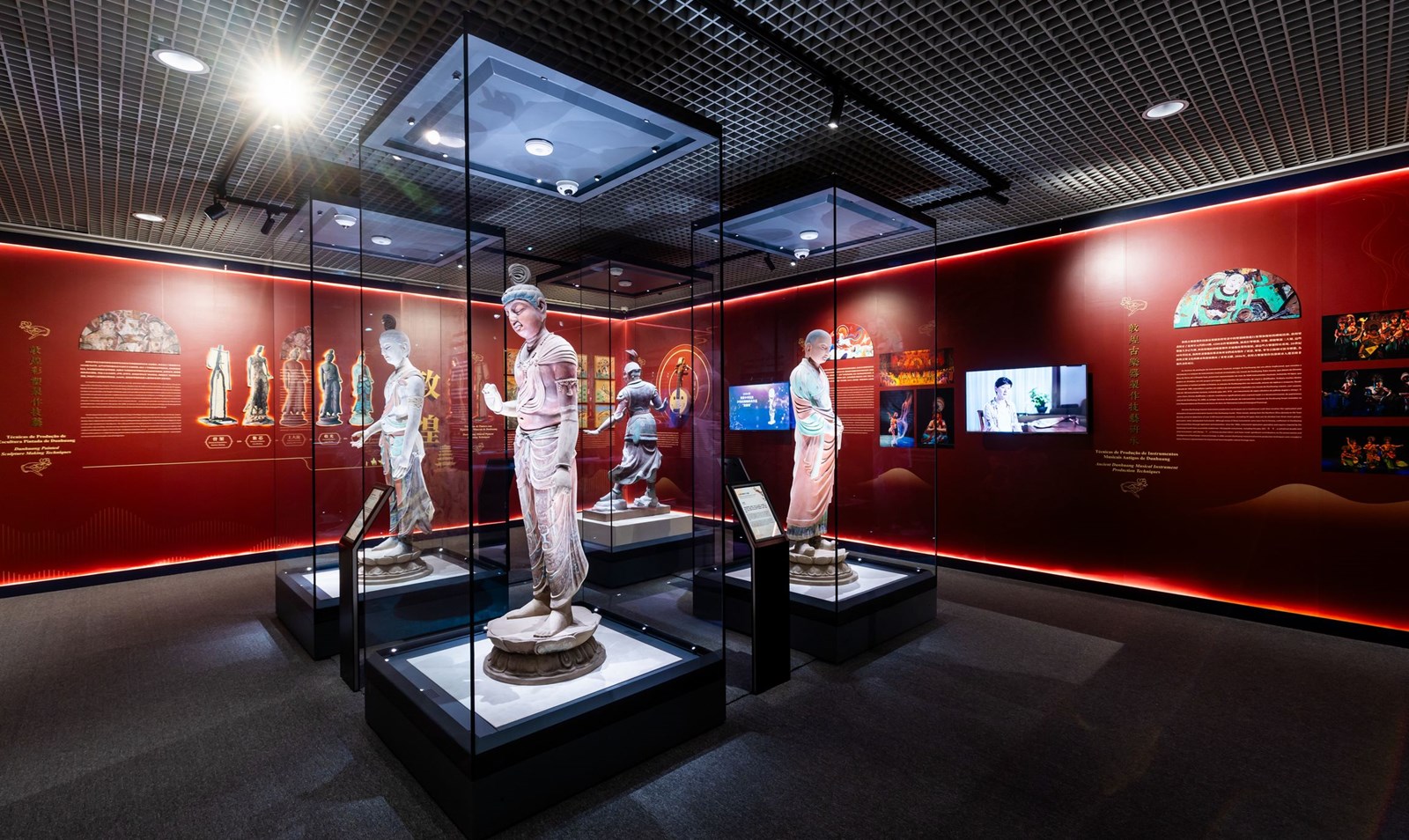
2025Genesis and Spirit – Exhibition of Gansu Intangible Cultural Heritage
| 地點 | Exhibition Gallery, 3rd floor of Macao Museum |
| 時間 | 星期二至日,早上十時至下午六時; 星期一休館 |
| 收費 |
With the theme “Symphony of the Silk Road, Enchanting Gansu”, the exhibition unfolds in four captivating chapters: “Ballads of Longyou”, “Surging Rivers”, “Blossoms of Dunhuang”, and “Eternal Breeze Along the Silk Road”, featuring 35 iconic intangible cultural heritage items through graphic narratives, video documentaries, and authentic artefacts.
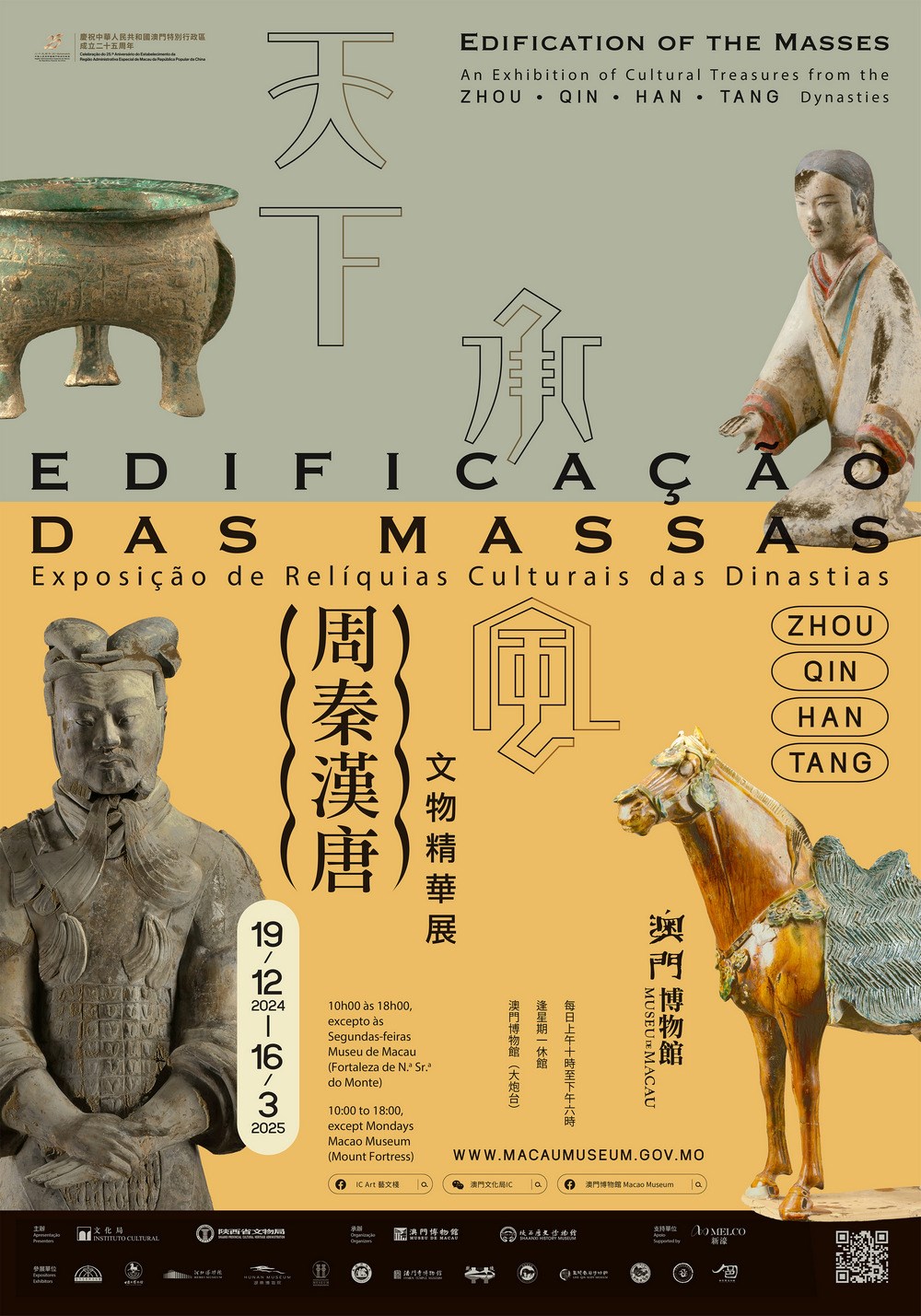
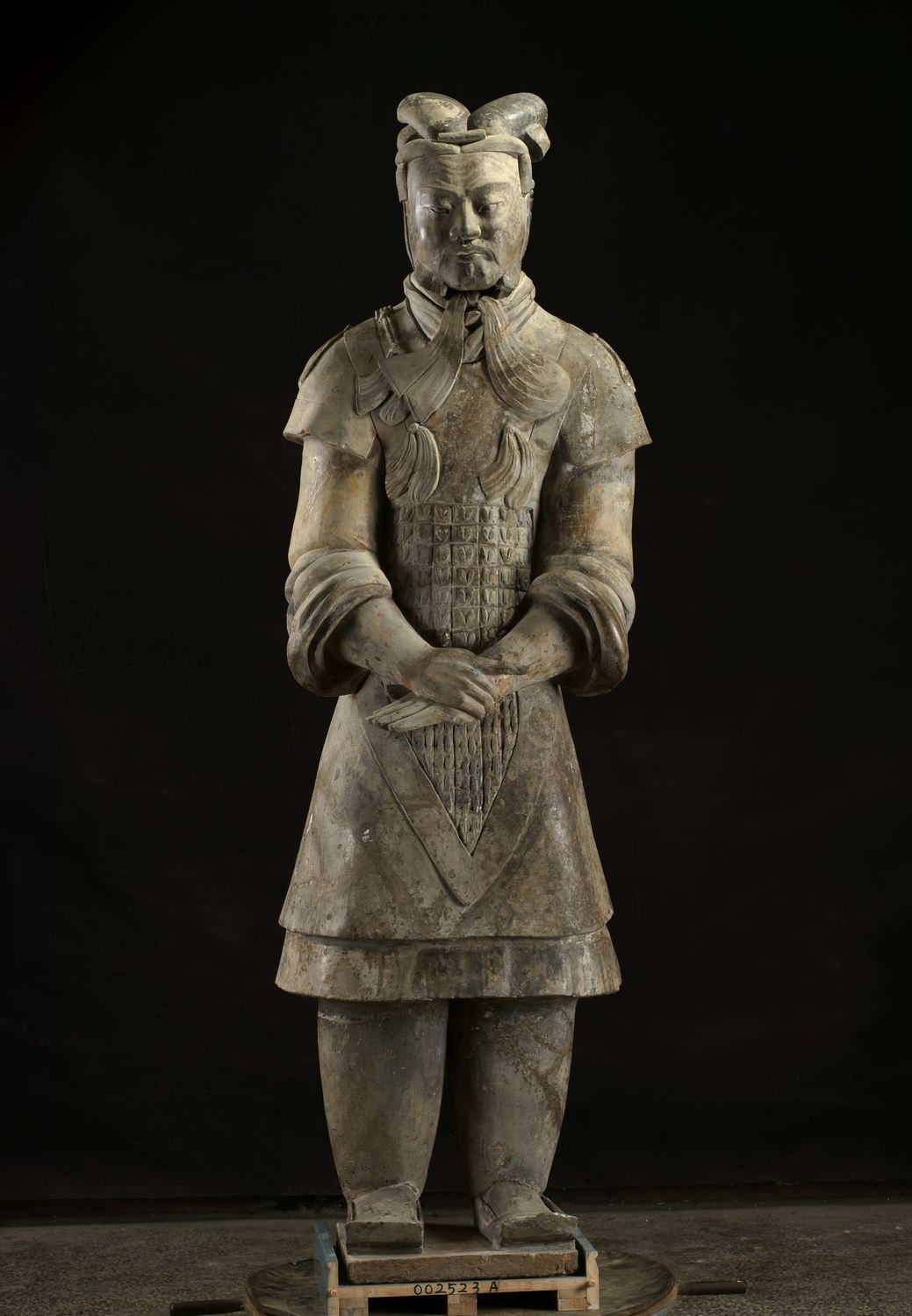
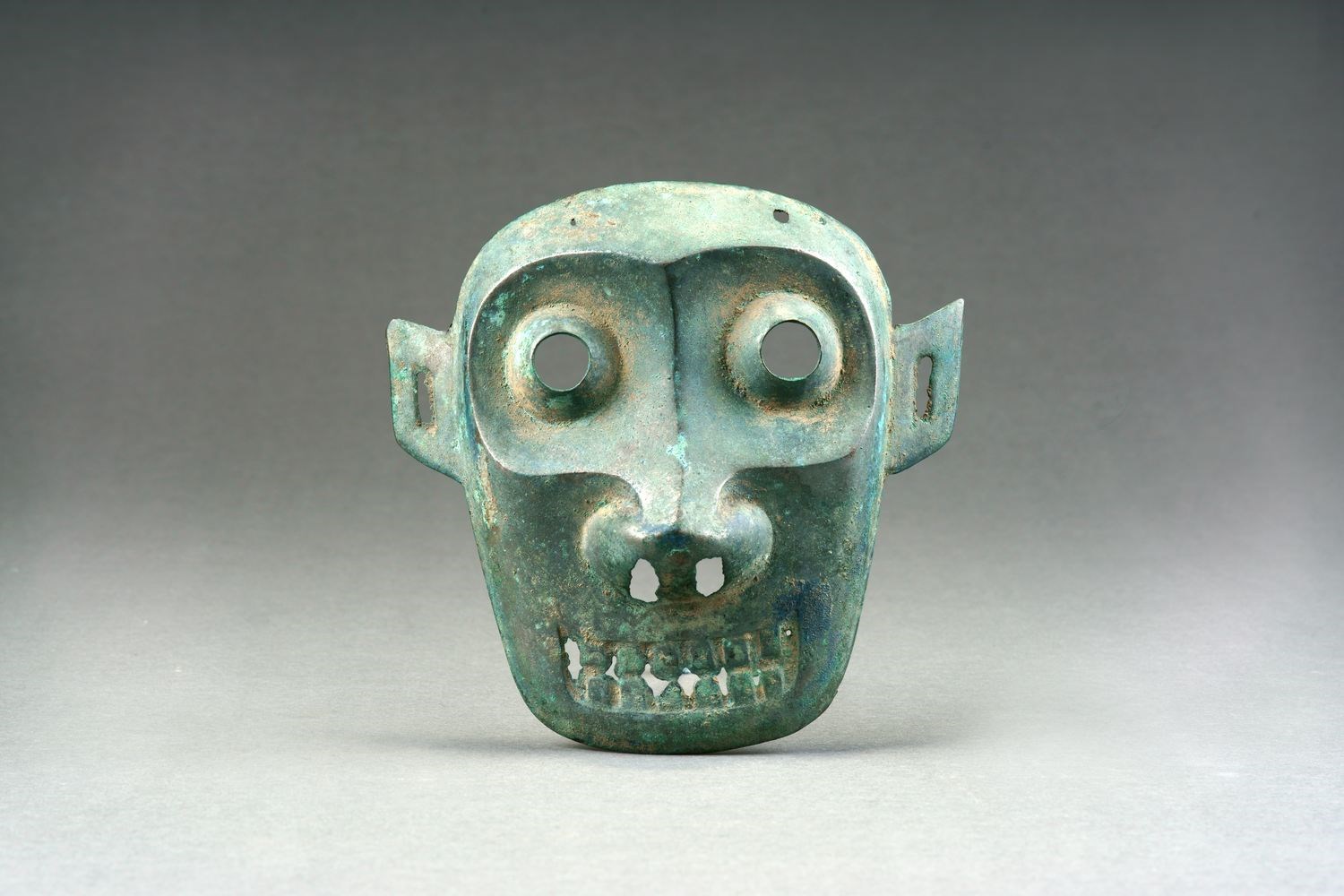
Edification of the Masses — An Exhibition of Cultural Treasures from the ZHOU • QIN • HAN • TANG Dynasties
| 地點 | Exhibition Gallery, 3rd floor of Macao Museum |
| 時間 | Tuesday to Sunday, 10am to 6pm (last entry at 5:30pm) |
| 收費 |
The four dynasties of Zhou, Qin, Han, and Tang in the long history of ancient China not only created enormous material wealth, but also witnessed spectacular cultural prosperity. As glorious pinnacles of China’s cultural attainments, these four epochs contributed greatly to the development of human civilisation in general, and their economic, political, cultural, and social legacies can still be felt in China today.
Explore All Exhibitions
